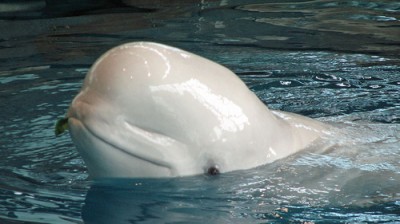- Welcome to Conscious Breath Adventures
Canaries in the Coal Mine: Marine Mammals and Disease - Swim with whales, Silver Bank Dominican Republic | Conscious Breath Adventures
Who doesn’t love dolphins, those cheery, bow-riding, promiscuous fellows, living the watery equivalent of the life of Riley? What their playful antics belie is that many of the marine mammals we share our coastal seas with are sick. Perpetually sick. They are plagued by cancers, viruses, pneumonia and other bacterial or yeast infections. They are sickened by harmful algal blooms; frequently deafened from shipping noise or seismic survey; and by exposure to toxic chemicals.

We have long relied on the oceans’ vast diluting potential to get rid of our waste. For years the attitude has been that the solution to pollution is dilution. But marine mammals raise a cautionary tale. Far from dispersing, chemicals like heavy metals, oil byproducts, pesticides and flame retardants persist in the oceans and become hyper-concentrated in top predators. Just as we are more susceptible to illness when we are run down, scientists are concerned that chronic exposure to contaminants is lowering immune system resistance in marine mammals.
Hardy Jones of BlueVoice.org notes that topics discussed at biennial Society of Marine Mammalogy conferences now, more than ever, focus on contamination of the marine environment and impacts on the health of marine mammals, and even on humans. So, what kinds of diseases are we talking about?
Akin to our recent swine flu outbreaks, epizootics, which are epidemics affecting animals, are increasingly common. Thousands of dolphins, whales, sea otters and seals have died in recent decades in what are called Unusual Mortality Events. Many have been associated with harmful algal blooms like red tides. Some were triggered by outbreaks of viruses like influenza and the morbillivirus which is related to the measles agent. Also implicated is a bacterial infection called Leptospirosis.

Another zoonotic disease, (one that is transferable between animals and humans) is caused by a bacterium called Brucella. Widespread amongst marine mammals, when it outbreaks into the disease brucellosis it is implicated with skin lesions and brain inflammation. Cases in humans are linked to consuming raw seafood.
Cancer in marine mammals, once rare, looks to be on the increase. Triggering agents like papillomaviruses are linked with genital, tongue and skin cancers in bottlenose dolphins and manatees, as they are with cervical cancer in humans.
While it doesn’t paint a pretty picture, we are getting better at assessing diseases in marine animals. We’re certainly talking about the topics more. Projects like the multi-year Health and Environmental Risk Assessment, run by Florida Atlantic University’s Harbor Branch Oceanographic Institute, are studying live dolphins in the wild. So, we’re starting to understand the real world implications of environmental stressors like pollutant run-off. What is just as crucial, though, is what are we doing to address them?
Contaminants reach the oceans primarily from rivers, streams and outfalls that comprise water management systems and waste disposal for the 40% of us, globally, that live in the coastal zone. In the words of the famous animated clownfish, Nemo, “All drains lead to the ocean.” So how we live does make a difference. Here are just a few choices we can make to lessen the toxic legacy we leave to the oceans and to ourselves.
1) Opt for organic agricultural techniques both for food items and in our own backyards, minimizing the use of pesticides, herbicides and inorganic fertilizers.
2) Choose natural, non-toxic household products.
3) Dispose of all chemical waste properly. This includes oils, medicines and paints.
4) Use and promote the use of green energy. When coal and oil are burned contaminants like mercury are released into the atmosphere and deposited in the oceans.
5) Support and encourage ocean leaders. We need stronger legal controls on industry waste disposal and pollution. And we need to protect coastal habitats, like our natural filtration systems—wetlands and mangroves.
Marine mammals touch a chord with so many of us. On this subject, as with many, it’s apparent that they still give back, because the take-home lesson is that opting for a healthier lifestyle is much better for us, and for them.